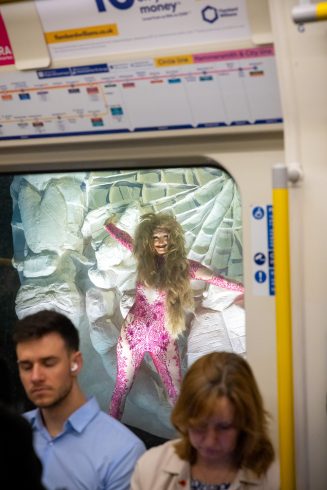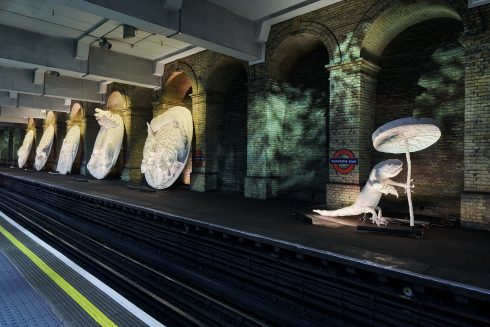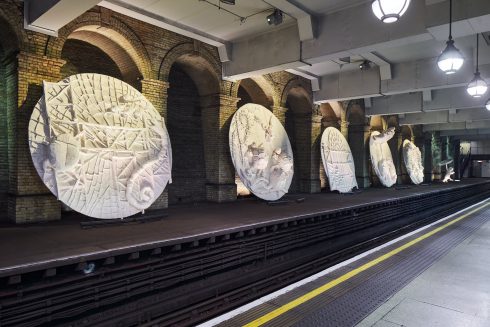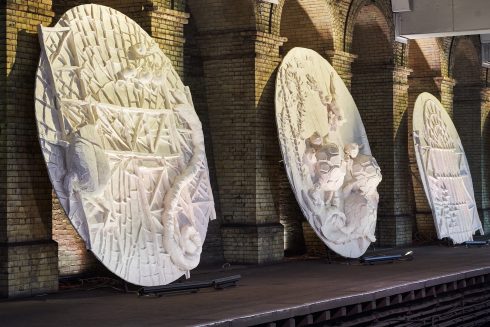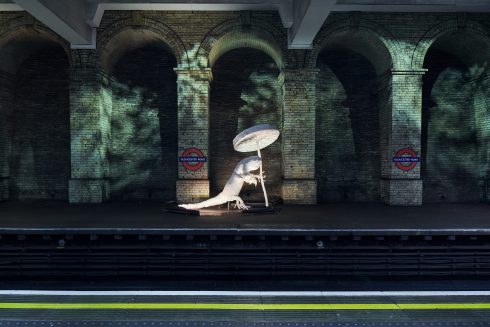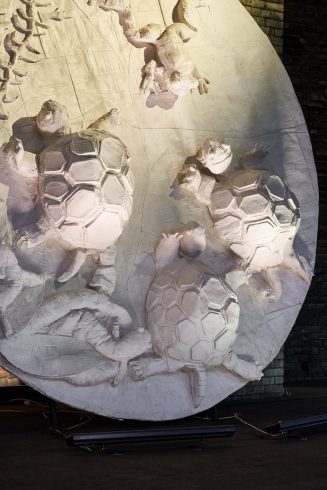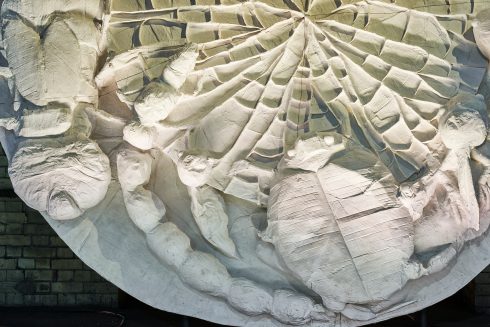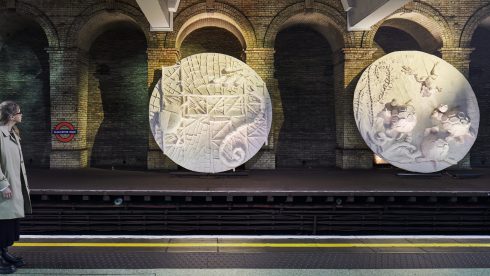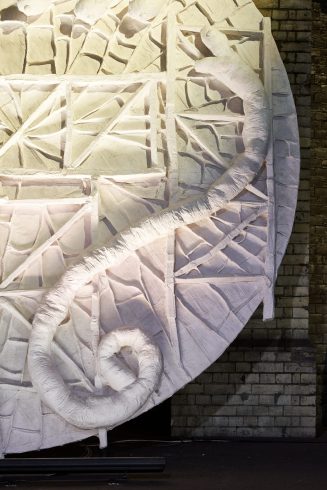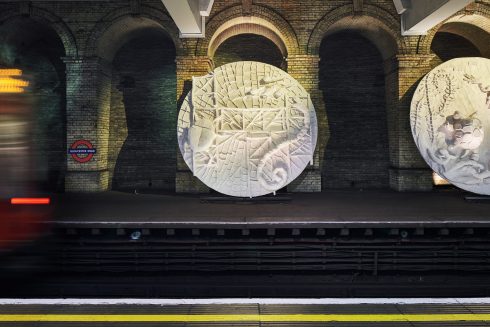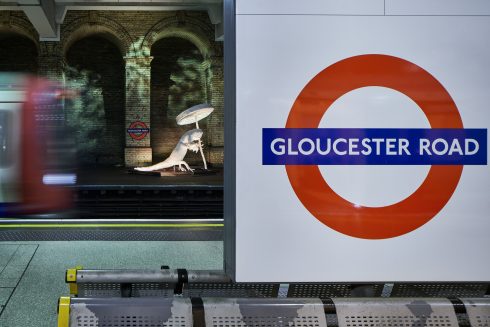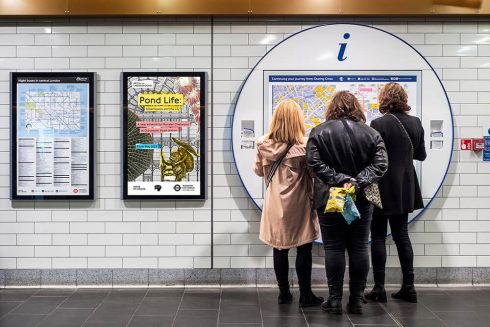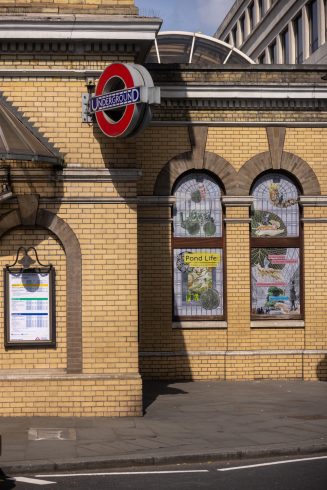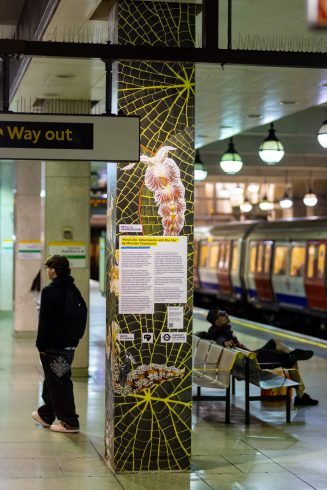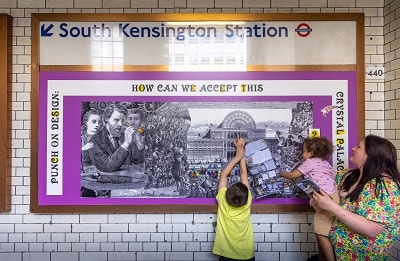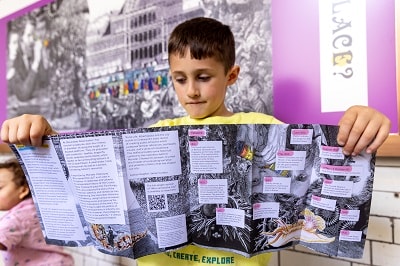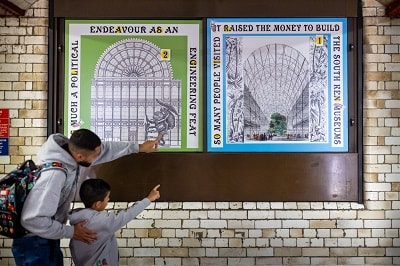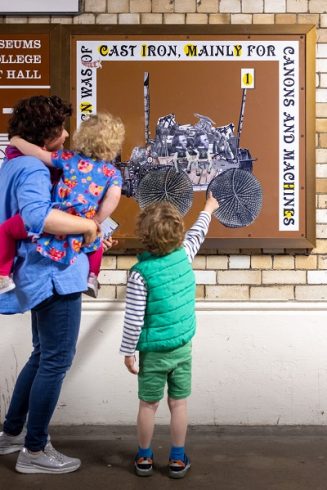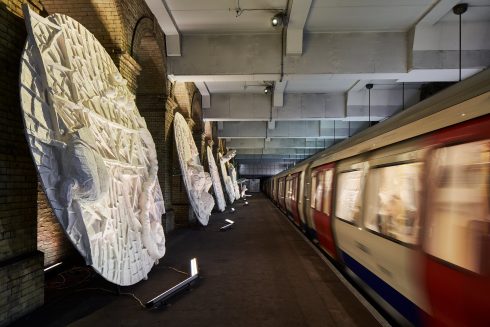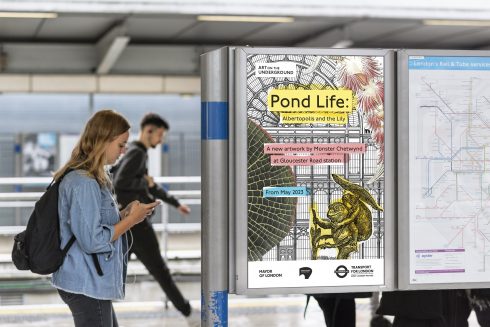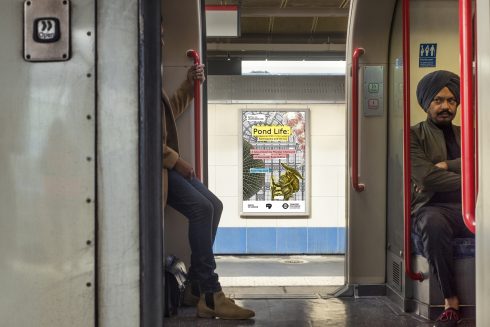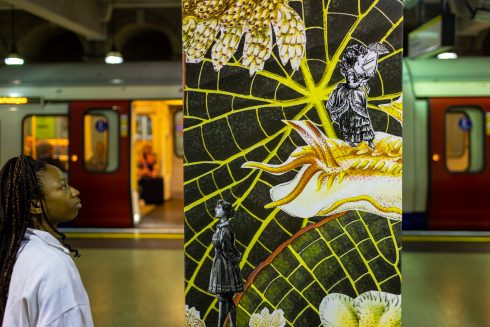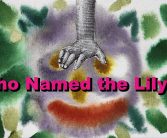Monster Chetwynd combines historic references, theatrical aesthetics, and popular culture to tell stories that reflect on society and morality. Her installation, Pond Life: Albertopolis and the Lily, reveals the entwined histories of Gloucester Road station and the vast programme of cultural redevelopment that followed the Great Exhibition of 1851 in Hyde Park.
Through her research into Gloucester Road and the local area Monster Chetwynd became fascinated by the giant Amazonian waterlily. This plant was the inspiration behind gardener-turned-architect Joseph Paxton’s pioneering design for the Crystal Palace, the building which housed the Great Exhibition. Paxton based the structure on the waterlily’s elaborate network of ribbed veins, creating a modular, kit-form design which paved the way for successive public buildings and revolutionised architecture. Revenue from tickets to the Great Exhibition provided capital for the construction of the museums situated along Exhibition Road, these new developments created a cultural destination known as ‘Albertopolis’.
At Gloucester Road Tube station, Chetwynd creates a series of five 4-metre diameter disc-shaped sculptures along the length of a disused platform. Each sculpture is populated with creatures – beetles, dragonfly larvae, tadpoles and tortoises – that appear to be constructing sections of the Crystal Palace. They show the underwater life of the submerged lily pads, their spiny network of veins playing host to the industrious wildlife. Rather than stepping down into the tunnels of the London Underground it is as if the viewer has stepped beneath the surface of the water, into a subterranean simulation of the Amazon. A freestanding salamander, holding an Amazonian lily pad as a parasol, is an anthropomorphic addition to this scene of amphibian industry. The sculptures reference the commemorative coins, medallions and souvenirs that were created to commemorate the Great Exhibition, as well as the array of terracotta animal sculptures that decorate the exterior walls and vaulted galleries of the Natural History Museum.
A trailer for a new film by Monster Chetwynd, Who named the Lily? is also on view in the station. It celebrates and laments the complicated history of the Crystal Palace. Chetwynd plays the ‘Fact Hungry Witch’, who explores the story of the Amazonian waterlily, and reveals its links to engineering. Shot on 35mm film by artist-filmmaker Margaret Salmon at locations including Chatsworth House, The London Transport Museum and the Natural History Museum. It features a cast of performers, including the historian and broadcaster, Adam John Hart-Davis and a group of young people from FAT studio, a community-led initiative based at London’s Old Kent Road. The artwork brings to light the politics of Paxton’s developments in industry and architecture; however, the protagonist of this story is the waterlily – a catalyst for ground-breaking technological advancement.
Monster Chetwynd has also devised an interactive detective hunt, aimed at families at South Kensington, the ‘Fact Hungry Witch’ invites participants to find clues hidden in her seven poster artworks situated along the South Kensington pedestrian tunnel.
Chetwynd’s commission for Art on the Underground builds on the artist’s track record of creating public artworks that engage broad and varied audiences through evocative references and an uplifting, irreverent sense of fun.
Monster Chetwynd, artist, said: “I love travelling by public transport. I have always loved the London Underground. I remember watching the film ‘Babylon’ (1980) as a teenager and recognising that I am not alone in celebrating the Tube. I find the deep tunnels that allow fast journeys, cathartic. I have had many adventures on the Underground. I am a fan of John Betjemans’s Metroland. I feel oddly proud that the London Underground is one of the earliest ever built. I knew this when I was growing up in London but I didn’t know the local history of Gloucester Road and South Ken Tube stations. I only read this story recently when I was invited to make an artwork for Gloucester Road Tube station. The local history is surprising and very inspiring. As a result, instead of making one piece of work in response, I have made two. I have made a sculpture to be on display on the disused platform. Secondly, I have made a film to connect people to the reasons behind the sculpture. The process of making these two works has been epic in my opinion! By researching events that are ‘Victorian’ I have opened the lid into how the British Empire is so close to our reality even when we don’t realise it is and by lifting this lid I have learnt a lot. I would like to say I have been inspired by aspects of engineering history and the commission is a result of this. The greater part of the political and economic context has also influenced me. The poetic connection between a Lily from the Amazon (that smells of pineapple and entraps beetles in its pink interior overnight) and the arches and rumbling tunnels of Gloucester Road, this connection needs to be brought forward. How history is re-examined and allowed to be accessible is also in need of discussion. The Art on the Underground commission has allowed this opportunity. I am the artist who volunteered to lift the lid. I have created an investigative character named ‘The Fact Hungry Witch’. The witch is useful in a naive quest to know everything, maybe as dedicated as Denis Diderot (1713). Let’s wait and see!”
